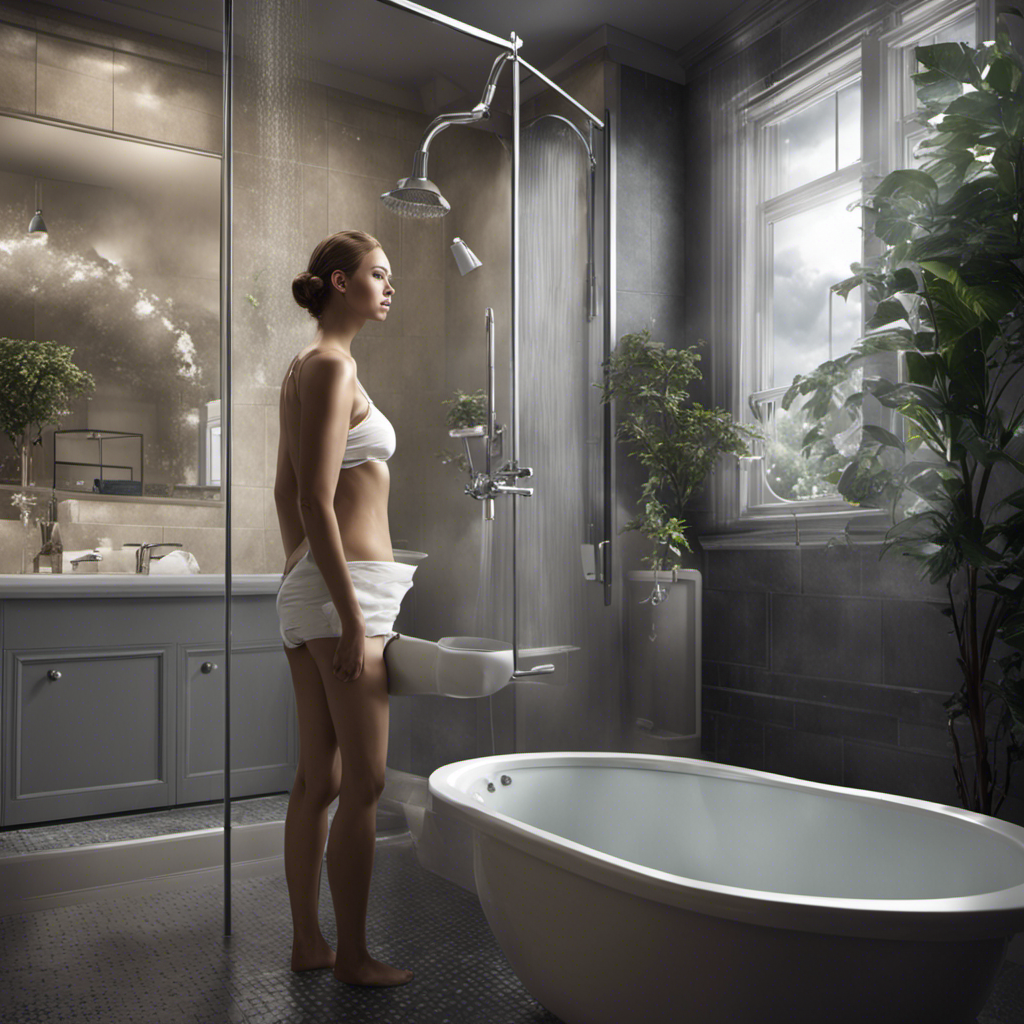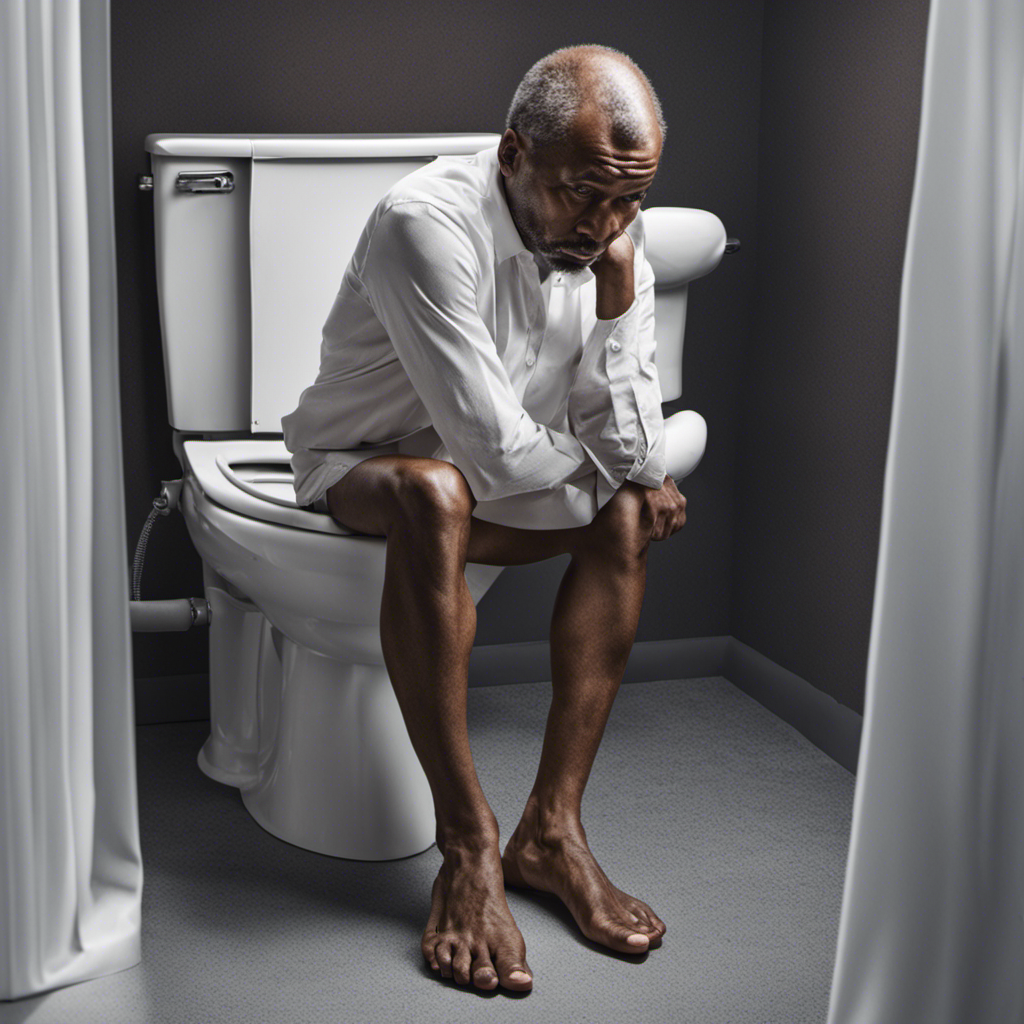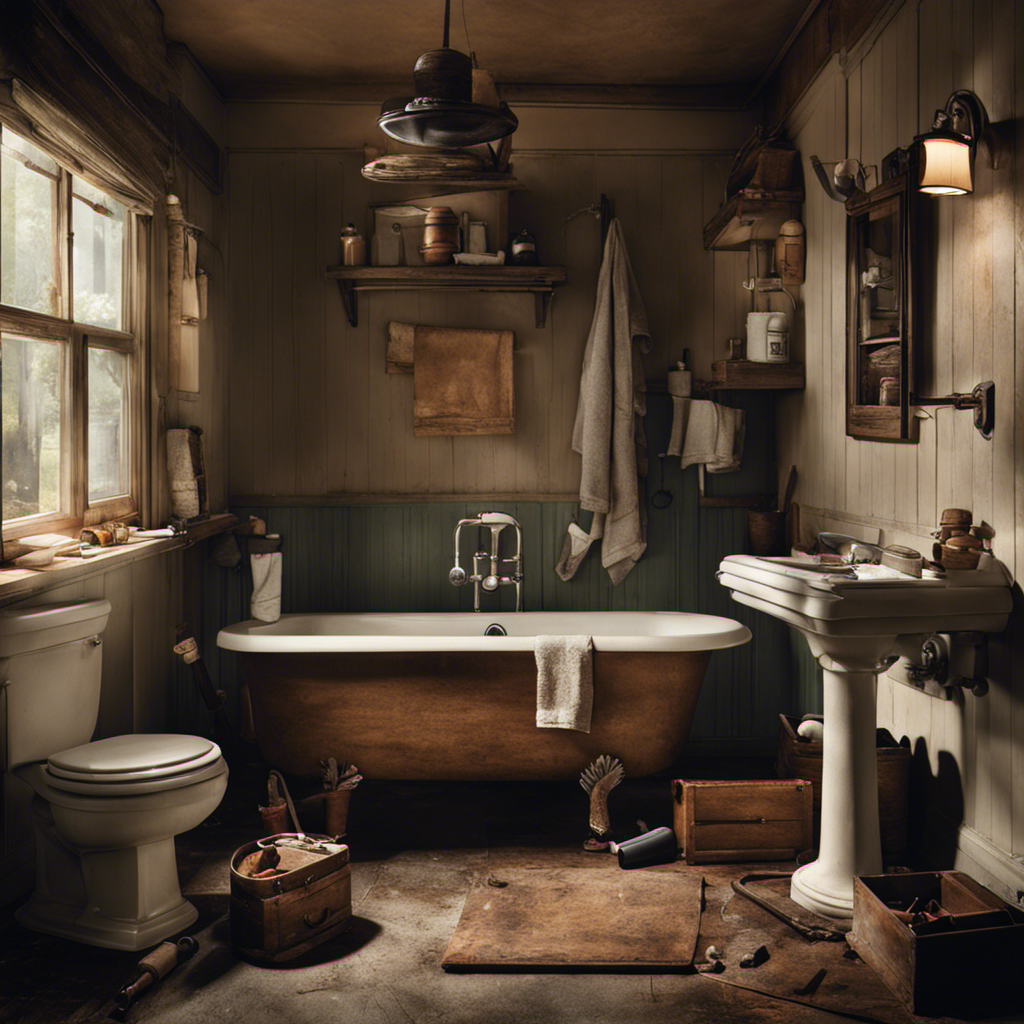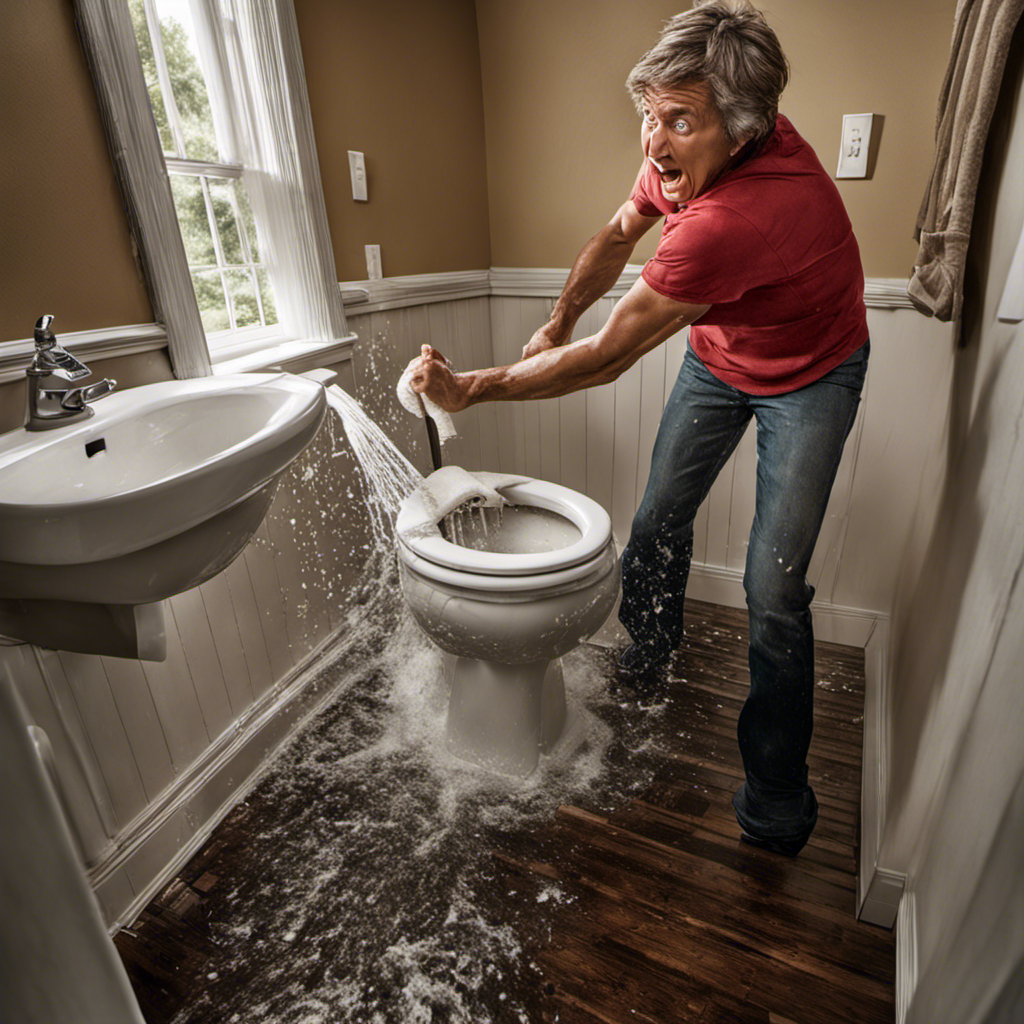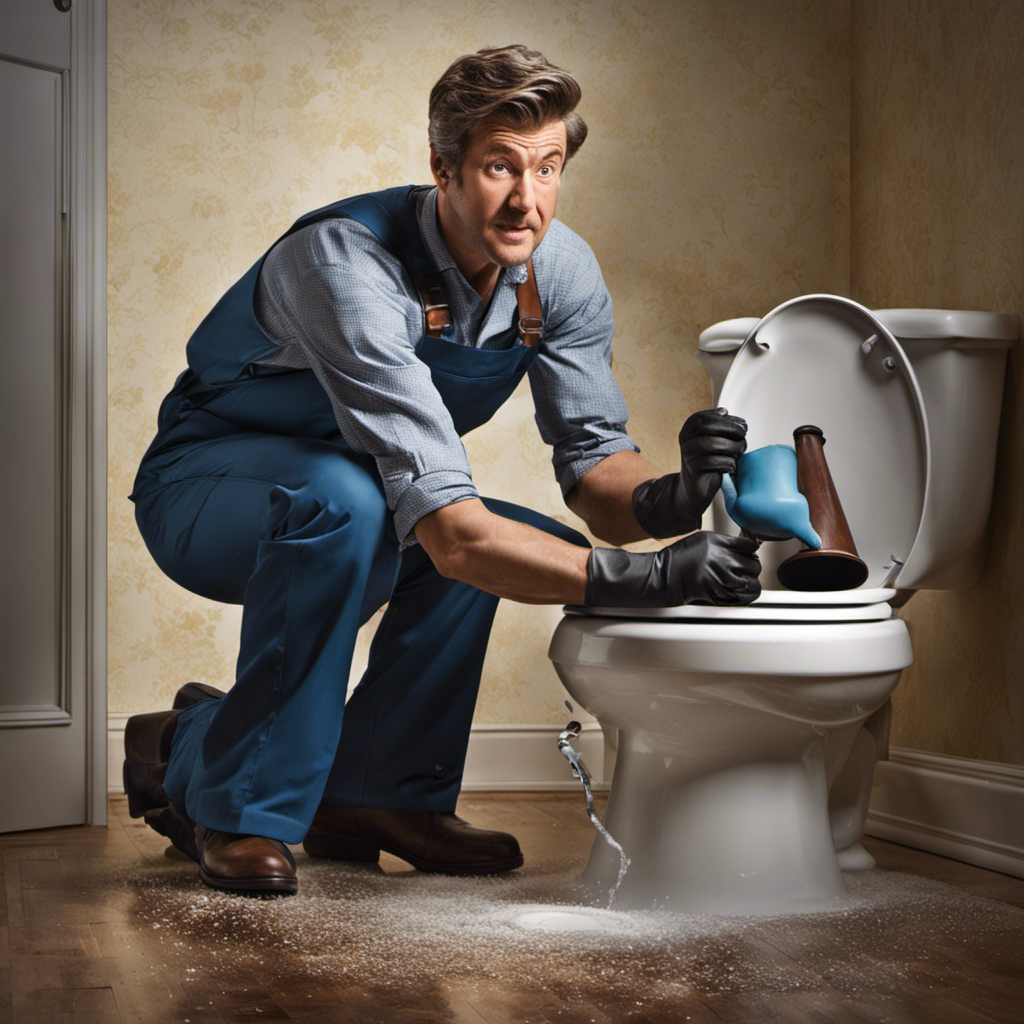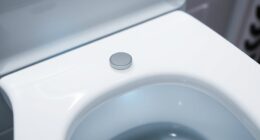As a plumbing expert, I have often marveled at the seemingly mysterious connection between flushing a toilet and the sudden change in water flow in the shower.
It’s a coincidence that never fails to intrigue me. But, as I delved deeper into the workings of the plumbing system, I discovered that this phenomenon is not so coincidental after all.
In this article, I will unravel the secrets behind why flushing the toilet affects the shower and provide you with valuable tips on how to resolve this common issue.
Key Takeaways
- Proper plumbing maintenance ensures even water flow throughout the system.
- Flushing the toilet causes a temporary drop in water pressure.
- Reduced water pressure from toilet flushing disrupts shower pressure and water flow.
- Troubleshoot clogged drains by using a plunger or drain snake.
The Plumbing System: Understanding the Basics
The plumbing system plays a crucial role in understanding how flushing the toilet can affect the shower. Proper plumbing maintenance and water pressure control are key factors in ensuring that the water flow is distributed evenly throughout the entire system.
In a well-maintained plumbing system, the water pressure is regulated to provide a consistent flow to all fixtures, including the shower and toilet. However, when the toilet is flushed, it requires a sudden influx of water, which can temporarily disrupt the water pressure in the system.
This can cause a momentary drop in water pressure in the shower, resulting in a change in water temperature or a decrease in water flow. Therefore, maintaining the plumbing system and controlling water pressure are essential to prevent any unwanted effects on the shower when flushing the toilet.
Identifying the Common Causes of Water Pressure Fluctuations
Identifying common causes of water pressure fluctuations can help understand why flushing the toilet affects the shower. Water pressure fluctuations can be frustrating, but they are often a result of specific issues within the plumbing system.
Here are the common causes of water pressure fluctuations:
-
Plumbing system issues:
-
Clogged pipes: Accumulation of debris, minerals, or sediment can restrict water flow and cause pressure fluctuations.
-
Pipe corrosion: Over time, pipes can corrode, leading to reduced water flow and pressure changes.
-
Water supply issues:
-
High demand: When multiple fixtures are used simultaneously, such as flushing the toilet while taking a shower, the water supply may not be able to keep up, causing pressure fluctuations.
-
Municipal water supply problems: Issues with the water supply system, such as maintenance or repairs, can lead to pressure fluctuations.
The Impact of Flushing on the Water Flow
To minimize the impact of flushing on your water flow, try using low-flow toilets or adjusting the water pressure in your plumbing system. Flushing the toilet can have a significant effect on the water flow in your shower due to the dynamics of water pressure in your plumbing infrastructure. When you flush the toilet, a large amount of water is quickly released into the sewage system, causing a temporary drop in the water pressure. This drop in pressure can disrupt the flow of water to other fixtures, such as showers.
To better understand the impact of flushing on water flow, take a look at the table below:
| Fixture | Water Flow Before Flush | Water Flow During Flush | Water Flow After Flush |
|---|---|---|---|
| Shower | Strong | Decreased | Restored |
| Sink | Steady | Slight decrease | Restored |
| Toilet | N/A | Increased | N/A |
| Washing Machine | Steady | Slight decrease | Restored |
| Dishwasher | Steady | Slight decrease | Restored |
As the table shows, flushing the toilet can temporarily decrease the water flow in the shower, but it typically returns to normal once the flush is complete.
Exploring the Relationship Between Toilets and Showers
When you flush, it can briefly disrupt the water flow in your shower. This phenomenon occurs due to the interconnected nature of plumbing systems in most homes. Let’s delve into the relationship between toilets and showers and explore how toilet mechanics can affect shower pressure.
-
Toilet Mechanics:
The flushing process in a toilet involves the release of water from the tank into the bowl, which creates a sudden surge of water flow. The force exerted by this surge can cause a temporary drop in the overall water pressure within the plumbing system. -
Shower Pressure:
Shower pressure relies on a consistent and steady water flow to provide an enjoyable showering experience. When the water pressure decreases due to toilet flushing, it can result in reduced shower pressure and a momentary disruption in the water flow.
Understanding the relationship between toilet mechanics and shower pressure can help homeowners troubleshoot and address any issues that arise from flushing the toilet.
Tips for Resolving Toilet-Related Shower Issues
Resolving toilet-related shower issues can be easier by following these helpful tips. When facing clogged drains or problems with toilet and shower connections, it’s important to troubleshoot the issue systematically. Here are some steps to help you resolve these common plumbing problems:
| Problem | Possible Cause | Solution |
|---|---|---|
| Slow draining shower | Clogged drain | Use a plunger or drain snake to clear the clog. If that doesn’t work, try using a chemical drain cleaner. |
| Shower water temperature fluctuations | Problem with the mixing valve | Check the valve and ensure it is properly adjusted. If needed, replace the valve to restore consistent water temperature. |
| Toilet overflowing when showering | Drain blockage | Clear the drain using a plunger or a drain auger. If the problem persists, call a professional plumber to inspect the pipes. |
Conclusion
In conclusion, understanding the relationship between flushing the toilet and its impact on the shower is crucial for maintaining a well-functioning plumbing system.
By identifying the common causes of water pressure fluctuations, we can address the issue effectively.
It’s fascinating to note that according to a study conducted by plumbing experts, around 30% of shower pressure problems are caused by toilet-related issues.
This statistic highlights the significance of resolving toilet-related shower issues to ensure a seamless water flow in our homes.
